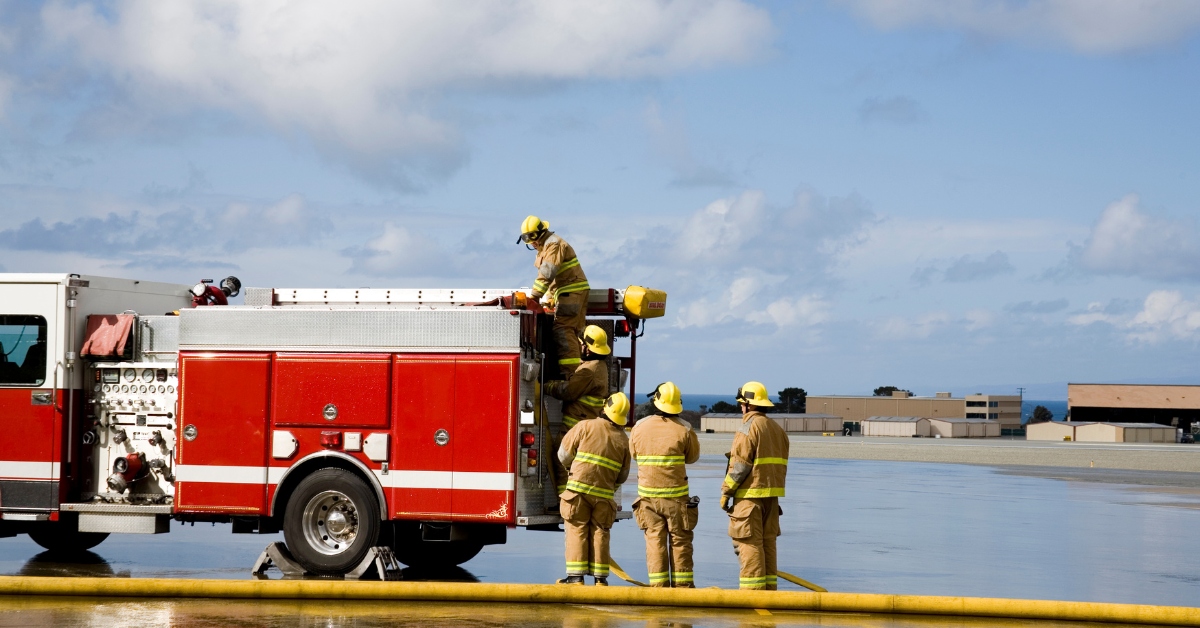Perfluoroalkyl and polyfluoroalkyl (PFAS) substances have been widely used in the manufacturing process since the 1940s. Because these substances are resistant to water, oil and heat, they have been incorporated into numerous products.
Consumers will recognize Teflon as being a coating that helps prevent food from sticking to cookware. Scotchgard is another recognizable name, having been used as a spray for upholstery and carpet to help repel stains. The multiple uses of PFAS go on and on, with the chemicals showing up in paints, cleaners and even wire insulation.
One product in which PFAS has been used for a very long time is a substance called aqueous film-forming foam (AFFF). Regulations by the Federal Aviation Administration (FAA) have forced commercial airports to train workers using AFFF and to even calibrate equipment with and regularly use the highest performing AFFF systems. In short, this foam has been used because of its ability to extinguish petroleum-based fires at airports and manufacturing facilities. The military has required the use of AFFF partly due to the foam’s ability to extinguish jet-fuel fires by creating a virtual foam blanket that smothers the fire. Its use over the decades has helped protect passengers, crew and other airport personnel, but the chemicals have also been linked to adverse health effects.
The Dangers of PFAS
The health risks to humans from exposure to PFAS are becoming more and more evident. Among the resultant adverse health issues are developmental damage to fetuses during pregnancy or to breastfed babies, cancers like kidney and testicular, liver damage, immune system disorders, and thyroid problems.
PFAS chemicals do not break down, degrade or dissipate environmentally. Because of their widespread use, they are found globally in the soil, bodies of water, the air and in dust. Runoff water has helped ensure that these toxic substances have made it into drinking water supplies. PFAS collect in individual organisms and also in the food chain. Therefore, unfortunately, these substances can be found in most people’s blood.
Use of AFFF in Airports Leads to Contamination
The PFAS in firefighting foam have a free ticket to travel anywhere and cause harmful impacts. The toxic chemical makes its way through the soil, seeps into groundwater, and is even carried through the air. AFFF is released into the environment through various ways. Airports use the foam intentionally during training exercises, operational and testing requirements, and in emergency responses. At times, AFFF is released accidentally when being delivered, transferred or stored.
Indications are that, for years, the hazards to humans and the environment were either unknown or overlooked, perhaps deliberately. Very few guidelines were in place regarding the handling or management of the substance itself or of the resulting contaminated wastewater after AFFF’s use. Frequently, AFFF-laden wastewater was allowed to run into the soil and discharge like normal surface runoff water would.
Storage drums and storage tanks filled with AFFF have been known to leak at times. When they do, PFAS is released to the subsurface. This contamination moves naturally downward in the soil, enabling it to migrate into groundwater. The contaminated groundwater can then reach individuals’ water wells, plus creeks, streams and rivers. In this way, these toxic chemicals eventually get ingested into humans and wildlife.
Investigation of Contamination at Airports
After regulatory attention toward PFAS increased, new and evolving requirements began to emerge for airports. Due to the extensive use of AFFF at airports, it stands to reason that a great deal of testing for contamination would be needed at these facilities. Because the use of AFFF was mandated and required at airports throughout the country, it should not be surprising that contamination is being discovered at a great many airports during environmental investigations.
The California State Water Boards are using a “phased approach” in forcing various industries to search for PFAS contamination at their properties. Not surprisingly, at the top of the list in Phase One are California airports.
Beginning in March 2019, 27 airports were asked to submit a work plan for testing their facilities for the presence of PFAS. Typically, this type of investigation involves drilling holes to get soil samples, plus installing monitoring wells for collecting samples of groundwater.
Locations around the airport where the investigation needs to center include spots where AFFF was stored, spots where it was used for training, and also where it was used during emergency responses. These places are likely close to active runways and other high risk areas.
Of course, the logistics of these undertakings are very expensive, difficult and a complicated nightmare. Various divisions and departments that normally operate independently at airports are required to work together to accomplish this environmental assessment, and varying permits must be obtained from different agencies.
Risk of Cancer for Airport Firefighters
In summary, the toxic substance known as AFFF has been a mainstay at airports for putting out fires and also for training firefighters for decades. Its effectiveness at extinguishing petroleum jet fuel fires has likely saved numerous lives when aircraft accidents occurred. However, the awful risk of serious health problems for those who were on the front lines fighting those fires is incalculable.
A total of 167 airports were surveyed in Canada and the U.S. by the National Science Foundation between 2015 and 2016. The results that were produced in a 2017 study showed that more than 93 percent of all these airports failed to treat AFFF like hazardous waste during training exercises. Additionally, over 93 percent of them did nothing to contain nor clean up the toxic substance when it was on the ground afterward. Approximately 80 percent of these airports simply left the substance on the ground to soak in or dissipate. At best, a portion of the airports diluted it on the ground.
It becomes very clear when reading the above information that airport firefighters have been exposed to carcinogenic chemicals, along with a large number of Americans who get their water from contaminated water supplies.
Contact Our Airport Firefighting Foam Lawyers
If you, or a loved one, were an airport firefighter and suspect that you have developed a serious illness such as cancer from exposure to AFFF type foams or from any other source of PFAS, you may have grounds to claim compensation.
Call the Eichholz Law Firm to discuss your legal options against the manufacturers of PFAS containing contaminants. You can reach our legal team at (855)-551-1019 or fill out an online contact form.

